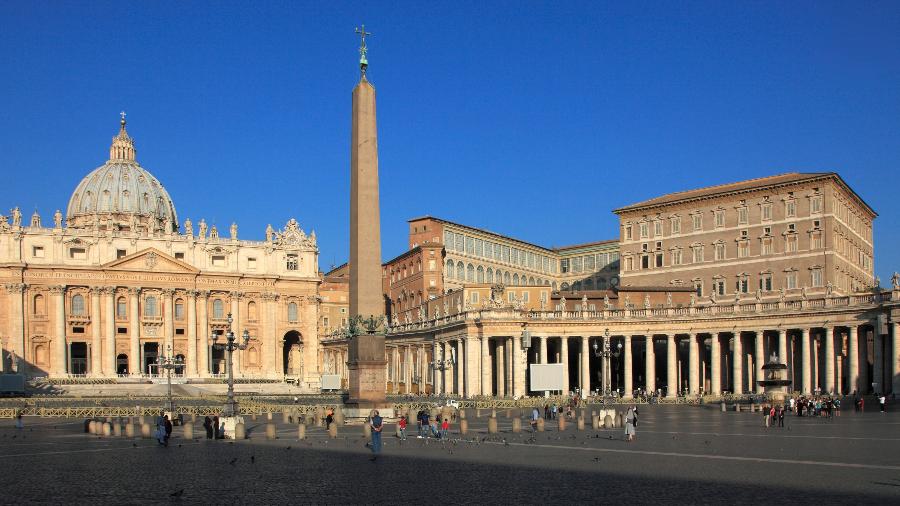Adverts
The Titanic, one of the most iconic and tragic ships in history, sank in the icy waters of the North Atlantic in 1912, forever marking our collective memory.
Decades after the disaster, the exact location of the shipwreck continues to spark curiosity and fuel theories. But what if it were possible to locate this historic landmark precisely, right on Google Maps? 🌍
Adverts
Now, technology allows us to clearly see where the legend lies.
In this content, we will reveal the exact coordinates of the shipwreck, explain what there is to see in the region and how this discovery connects the past to the present.
Adverts
Whether you're a history buff, a virtual explorer or just curious, learning about these details promises to be fascinating! 🛳️
Get ready for a journey through historical facts, technological advances and curiosities that will transform your perception of this legendary event.
Explore the location and discover what makes this spot in the ocean so special and full of stories. 🌊✨

Titanic on Google Maps: Where is the sleeping giant?
Ah, the Titanic… That legendary ship that came out to shine and ended up becoming the greatest maritime drama in history. And, of course, over time, it became a mix of fascination and mystery. But guess what: you can see the exact spot where it rested on the ocean floor using good old Google Maps! Yes, my friends, the same app you use to find the nearest bar can also take you to the final destination of this iconic vessel. And the best part? You don't even need a life jacket for this journey! 🛟
But wait, where exactly is he?
The Titanic sank in the North Atlantic, about 600 km off the coast of Newfoundland, Canada. After colliding with that infamous iceberg in 1912, it sank to a depth of approximately 3,800 meters. Now, if you want to check on Google Maps, the exact location is very close to the coordinates 41°43'57″N 49°56'49″W. Sounds complicated? Relax! Just copy and paste it into Google and voilà: you'll go straight to the point where he rests silently in the blue abyss.
Now, between you and me, seeing this on the map is almost like taking a peek into the past with a touch of technology, right? It's a mixture of fascination and respect. After all, this is the scene of one of the greatest tragedies in history, but also of many human stories.
Why is the Titanic still so fascinating? 🤔
Let's agree that the Titanic is much more than a sunken ship. It has become a true legend. And, honestly, it's not just because of James Cameron's film (although we know that "My Heart Will Go On" contributed a lot, right?).
What makes this story so special?
- The size of the tragedy: More than 1,500 lives were lost in a single event. It is impossible not to be moved by the human impact of this story.
- The broken promise: The Titanic was sold as “unsinkable” – the ultimate symbol of engineering confidence at the time. And then… well, we know what happened.
- The real characters: Each passenger had a unique story, from the billionaires enjoying first class to the hopeful immigrants in third class.
The Titanic is a portrait of society at the time, with its divisions, dreams and dramas. And its location, accessible via Google Maps, is a way of reminding us that, underwater, there is no first or third class. There is only history.
How to locate the Titanic on Google Maps? A quick and practical tutorial
Now that you know where it is, let's learn how to take a peek at the bottom of the sea using technology. It's easy, I promise. You can even impress your friends in your WhatsApp group later. 😂
Step by step guide to locating the Titanic:
- Step 1: Open Google Maps on your phone or computer (of course, right?).
- Step 2: In the search field, enter the coordinates of the Titanic: 41°43'57″N 49°56'49″W.
- Step 3: Press Enter and… voila! You will be taken directly to the wreck site.
- Step 4: Want to know more? Use satellite mode to get a more detailed view of the ocean.
Yes, I know that Google Maps doesn't exactly show the ship at the bottom of the sea – because, well, it's 3,800 meters deep. But just seeing the location is a great reminder of the length of the journey and the mystery surrounding the Titanic.
The Titanic and Technology: How Explorers Discovered the Deep Sea
Okay, Google Maps gives you the exact location, but the person who actually revealed the location of the Titanic was oceanographer Dr. Robert Ballard, back in 1985. He and his team used very advanced equipment for the time – like a super exclusive underwater Google Maps. 🚤
How did they find the Titanic?
- Sonar equipment: This technology emitted sound waves that helped map the ocean floor. When something different was detected… bingo!
- Robotic submarines: These “little robots” were sent to capture incredible images of the ship. And we’re talking about analog cameras, huh? Imagine the work!
- Lots of patience: It took months (if not years) of searching until the Titanic was finally found.
Today, with modern technology, we can visualize and even digitally recreate the Titanic. But the fascination of seeing it at the bottom of the sea, almost intact in some places, is something that continues to stir everyone's imagination.
Fun facts about the shipwreck site 🌊
The Titanic didn't just sink; it literally became part of the ocean floor. And the place where it rests has some pretty interesting peculiarities. Want to find out?
Fun facts about the Titanic at the bottom of the sea:
- Divided into two: When the Titanic sank, it broke into two main pieces, which are about 600 meters apart from each other.
- An ecosystem of its own: The ship has become home to several marine species. Yes, there are fish, corals and even microorganisms that are slowly devouring the hull of the Titanic.
- Extreme temperature: The water around the wreck is about -2°C. It's so cold that only the most rugged equipment can reach it.
- The silence: At the bottom of the ocean, everything is practically absolute silence. Can you imagine the air of mystery?
Seeing the Titanic's location on Google Maps is like traveling back in time. But knowing these interesting facts gives the story even more depth. It's as if each piece of the ship tells a part of its saga.
Why is visiting the Titanic (virtually) so special?
The ability to see the wreck site on Google Maps is not just a technological curiosity. It is a way of connecting the present to the past, of remembering the lives lost and the lessons we learned from this tragedy. And, between us, it is incredible how technology can make something so distant, both in time and space, accessible.
So, here's a tip: copy the coordinates, put them on Google Maps and allow yourself a journey through history. 🌍
Conclusion
The sinking of the Titanic, one of the most iconic events in history, continues to fascinate millions of people around the world 🌊. With the advancement of technology, it is now possible to explore the exact location where the Titanic rests at the bottom of the Atlantic Ocean through Google Maps. This innovation not only satisfies the curiosity of history enthusiasts, but also offers a unique opportunity to connect the past with the present, promoting an educational and immersive experience 🗺️.
Thanks to the precision of the coordinates and the integration with modern tools such as Google Maps, the mystery of the exact location of the shipwreck has been completely unraveled. In addition to expanding our understanding of the tragic event of 1912, this functionality encourages us to preserve the memory of the more than 1,500 lives lost and reflect on the advances in maritime safety since then ⚓.
Whether you’re a curious person or a researcher, exploring the Titanic site on Google Maps offers a fascinating journey into the heart of history. Share this discovery with your friends and family, enriching your conversations with this incredible knowledge. After all, the Titanic is not just a tragedy of the past; it is also an eternal reminder of humanity’s strength and fragility in the face of nature 🌍.
Get ready to dive into this unique experience and discover what lies behind one of the greatest mysteries of the seas. Explore, learn and share this historic adventure! 🚢




